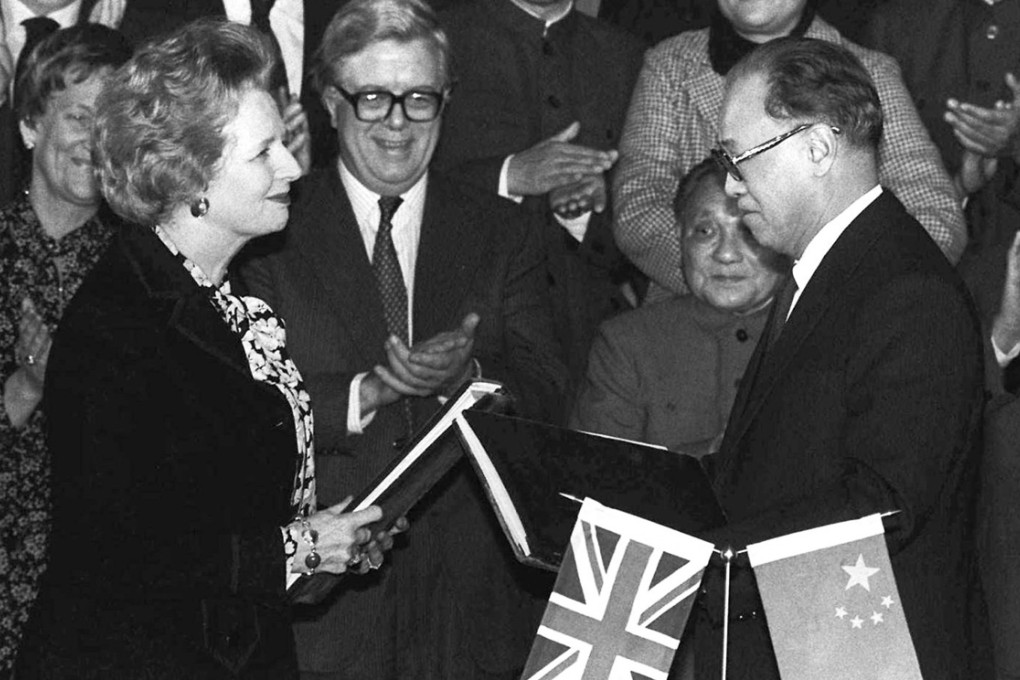Signing of joint declaration masked deep rift between Britain and China over Hong Kong's future
Leaders put bright spin on 1984 signing of joint declaration, but were already deeply divided over Hong Kong's constitutional arrangements

Words of appreciation flowed freely between leaders of Britain and China during late British prime minister Margaret Thatcher's visit to Beijing in December 1984. After all, the centrepiece of the occasion merited it: the signing of the Sino-British Joint Declaration on Hong Kong's future.
During her three-day visit that December, the "Iron Lady" also received assurances from Chinese leaders, including then paramount leader Deng Xiaoping and premier Zhao Ziyang , that Beijing would honour the agreement on Hong Kong's handover.
Yet the cordial atmosphere of the talks belied a rift between Britain and China over Hong Kong's affairs in the run-up to 1997 that was to emerge shortly after Thatcher and Zhao inked the historic agreement, according to recently declassified British government files.
The different stance between the two countries on matters such as democratic reform and representation in Hong Kong were swept aside during the signing. But inevitably, it sowed the seeds for a growing feud in the transitional period.
None of it, though, was evident during the Thatcher-Deng talks. Deng said the conclusion of the matter was of "historic importance". His remark was in stark contrast to his blunt reply to Thatcher during their first meeting in September 1982, when she warned about "grave consequences" if Beijing insisted on taking back Hong Kong. Deng had replied icily then that Beijing "would face the disaster head on and make the decision".
Clearly, both sides had moved considerably since that more fractious meeting of 1982.